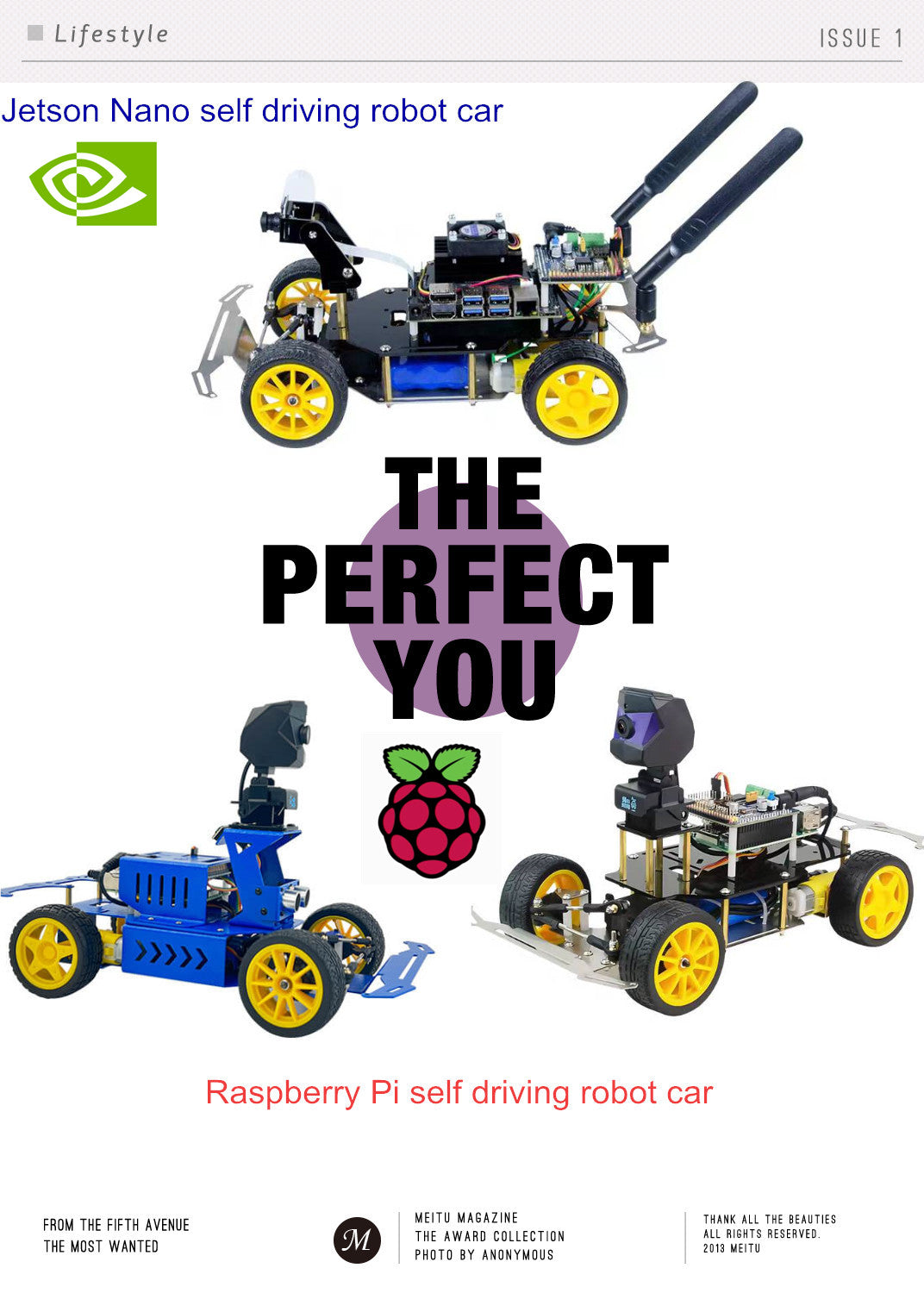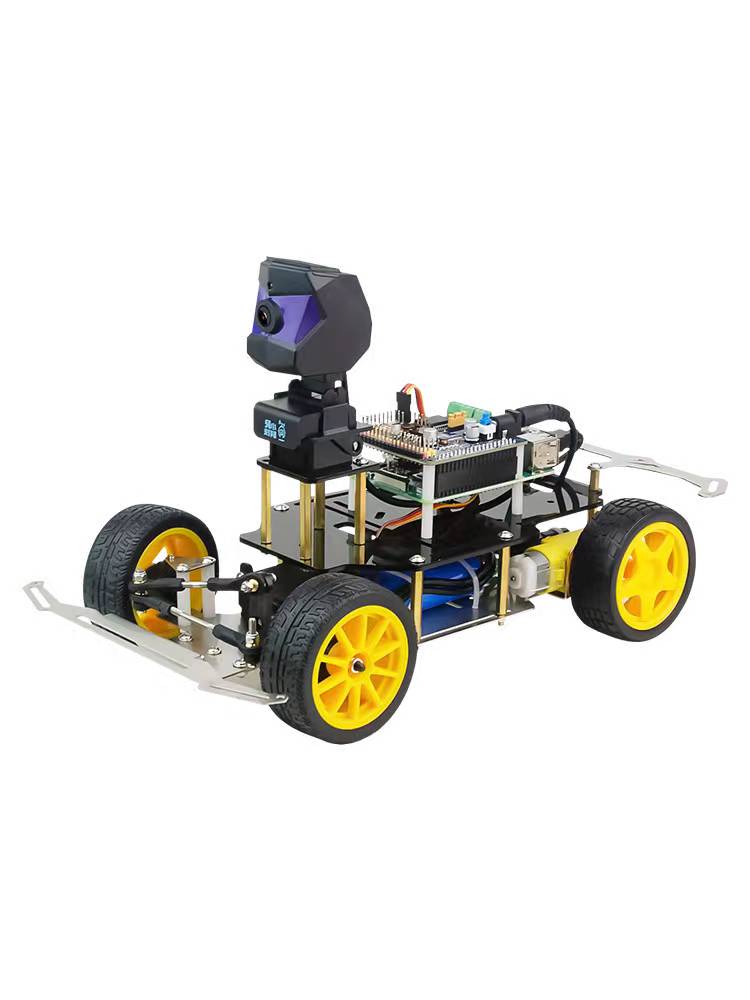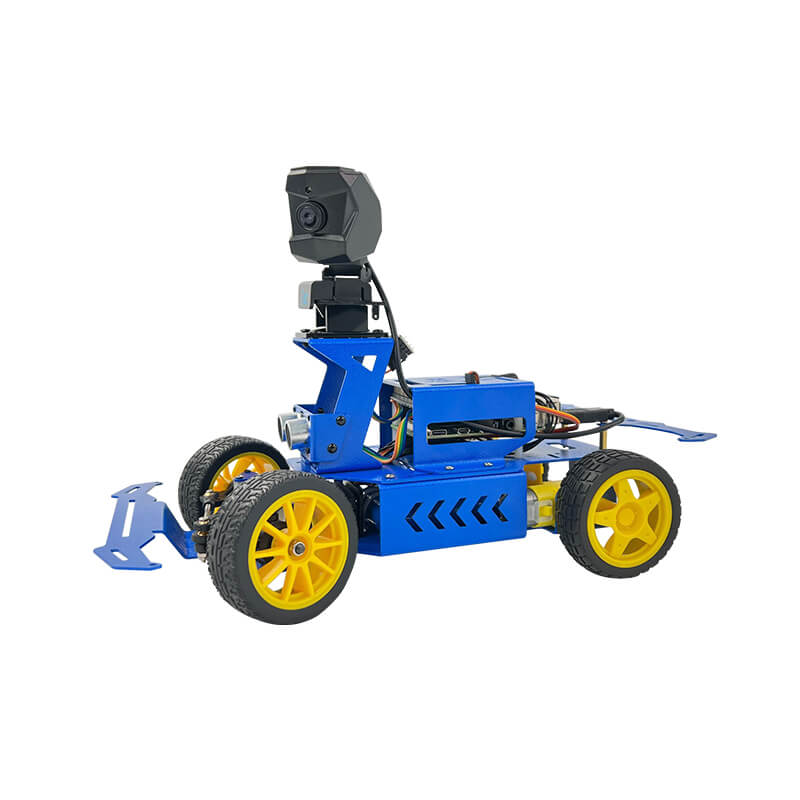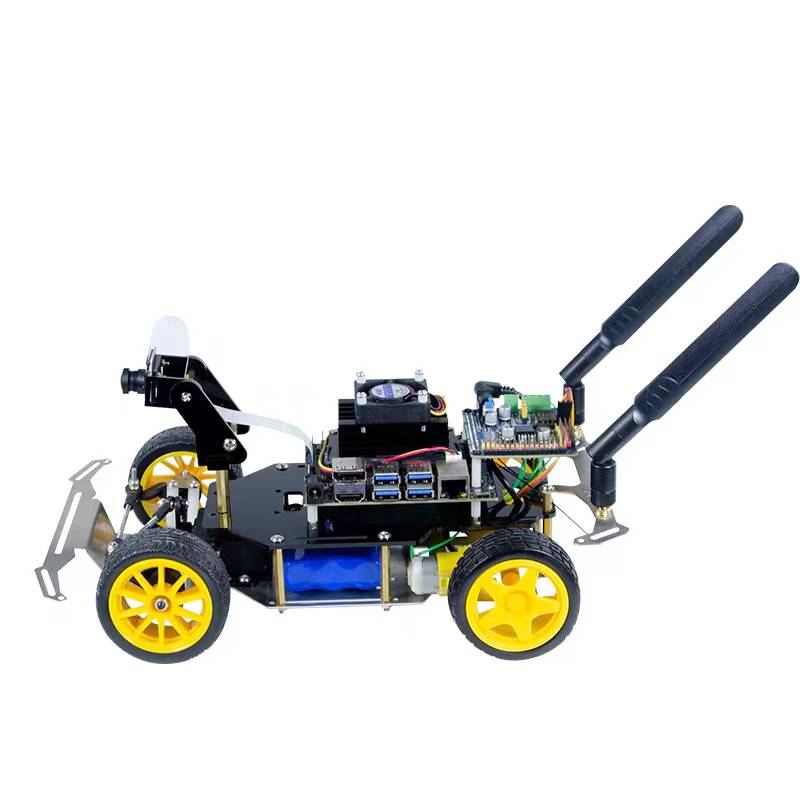Raspberry Pi self-driving robot car
The Raspberry Pi is a Linux-based microcomputer about the size of a credit card that was invented by the Raspberry Pi Foundation in 2012. The Raspberry Pi is extremely popular among hackers and robot developers due to its affordable price, flexible hardware, and open source software. The Raspberry Pi can be used for full-featured computer tasks like browsing the internet, playing games, watching HD videos, etc., but the feature that really sets it apart is its programmable GPIO pins. These pins allow the Raspberry Pi to connect and control various hardware devices, including sensors and actuators, to build a robot car with various functions.
The XR Raspberry Pi self-driving robot car uses the computing power and GPIO pin control functions of the Raspberry Pi, combined with various sensors (such as cameras, ultrasonic sensors, infrared sensors, etc.) and actuators (such as motor drive modules, servos, etc.) to realize the automatic driving function. Through programming, the car can recognize the environment, plan paths, avoid obstacles, and perform various tasks.
Jetson Nano self-driving robot car
Jetson Nano is a small, high-performance AI computing platform launched by NVIDIA, specially designed for edge computing. It integrates a powerful GPU and deep learning processor and can handle complex AI tasks, including image recognition, speech processing, object detection, etc. This makes the Jetson Nano an ideal choice for self-driving robot cars.
The XR Jetson Nano self-driving robot car uses the computing power of Jetson Nano, combined with sensors such as cameras and radars, to achieve high-precision environmental perception and target recognition. Through deep learning and computer vision algorithms, the car can independently plan its path, detect and avoid obstacles, and achieve autonomous driving. In addition, Jetson Nano also supports multiple communication protocols and can communicate with the Internet of Vehicles to receive traffic information and signals from other vehicles, thereby improving the safety and efficiency of autonomous driving.
Although both Raspberry Pi and Jetson Nano provide powerful hardware and software support for the application of self-driving robot cars, they have significant differences in many aspects.
First of all, from a hardware performance perspective, Jetson Nano has more powerful computing capabilities. It integrates high-performance GPU and deep learning processor, making it excellent at processing complex AI tasks, such as image recognition, object detection, etc. In contrast, although the Raspberry Pi also has programmable GPIO pins and rich interfaces, its computing power is relatively limited and may be more suitable for some lightweight autonomous driving tasks.
Secondly, from the perspective of software ecology and development environment, Raspberry Pi has huge community support and rich development resources. This means developers can more easily find relevant tutorials, libraries, and tools to speed up the development process. As a product of NVIDIA, Jetson Nano also provides good software support and development environment, but it may be relatively professional and more suitable for developers with certain experience.
Thirdly, from the perspective of practical applications, the Raspberry Pi self-driving robot car may be more suitable for some teaching, experiments or primary application scenarios. Due to its affordable price and ease of use, it has become the first choice of many beginners and enthusiasts. The Jetson Nano self-driving robot car is more suitable for complex application scenarios that require high-performance computing capabilities, such as high-precision environmental perception, real-time target recognition, etc.
Finally, both have certain advantages from a scalability and integration perspective. Raspberry Pi has rich interfaces and GPIO pins, which can be easily connected to various sensors and actuators to achieve the expansion of various functions. Jetson Nano, with its powerful computing power and flexible communication protocols, can be more easily integrated with other devices and systems. Users can choose the self-driving car that suits them as a learning tool based on their own abilities.




